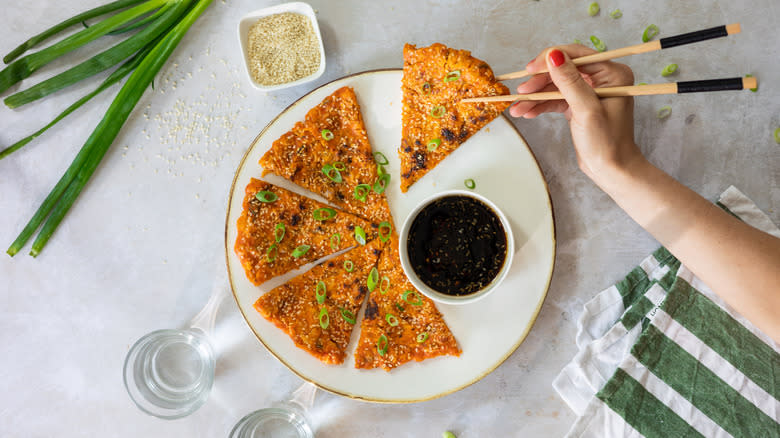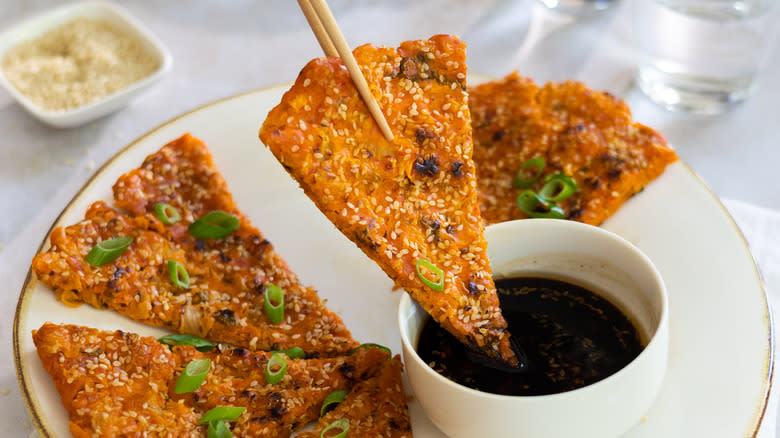Why Your Kimchi Pancakes Aren't Getting Crispy Enough

Making kimchi pancakes at home seems straightforward — make a simple batter, add the kimchi and other vegetables, and cook in a pan. But all too often, cooks end up with a soggy kimchijeon rather than the crispy version you know and love. The main reason? Not using enough oil.
To get the right amount of oil in the pan, think of this cooking process as a kind of deep fry rather than a saute. Your entire pan should be covered by oil. Start with half of the oil and you'll add the remaining amount after flipping the pancake. But more importantly, before you add the batter, ensure the oil is hot enough. Cold oil will only result in a greasy, soggy pancake as the batter will just soak it up.
After adding the batter, give it a few minutes to set. Moving it too soon robs it of the opportunity to build that initial crunch and may even cause the pancake to fall apart. Once the bottom has firmed up it's time to spin and slightly lift the pancake to ensure even distribution of the oil. This way every last inch gets a chance to crisp. Finally, once there's enough browning, flip the pancake, add a little more oil, and let the second side develop the same crispiness.
Read more: 21 Delicious Ways To Use Up Leftover Rice
Other Tips For Getting Crispy Kimchi Pancakes

If you've used enough oil to cook your kimchijeon but it's still not crispy enough, then the problem likely lies with your batter mixture. Overall, you need to make the batter light with a somewhat liquid consistency. To test this consistency, pour the batter from the mixing spoon. If it flows freely, you're good to go, if it's too viscous, add some more water a little at a time, and mix.
Assess the consistency even after mixing in the vegetables and add some more water if need be. The goal is to have a batter that's easy to spread on the pan to create a thin pancake that crisps easily rather than a thick one that's more likely to end up soft and dense in the middle. Additionally, once you pour the batter onto the pan, spread it out quickly to form the pancake. If you wait too long, the batter will set and firm up so you won't be able to create the thinnest sheet possible.
Lastly, you can also add baking powder to the mixture. This leavening agent creates tiny bubbles as the batter cooks which results in an airy, light pancake that's more likely to crisp up. And just like with regular pancakes the effect of the baking powder helps prevent an unappetizing, dense pancake. And that's it. With these tips, you can be sure to cook deliciously crispy kimchi pancakes that rival any restaurant's version every time.
Read the original article on Tasting Table

